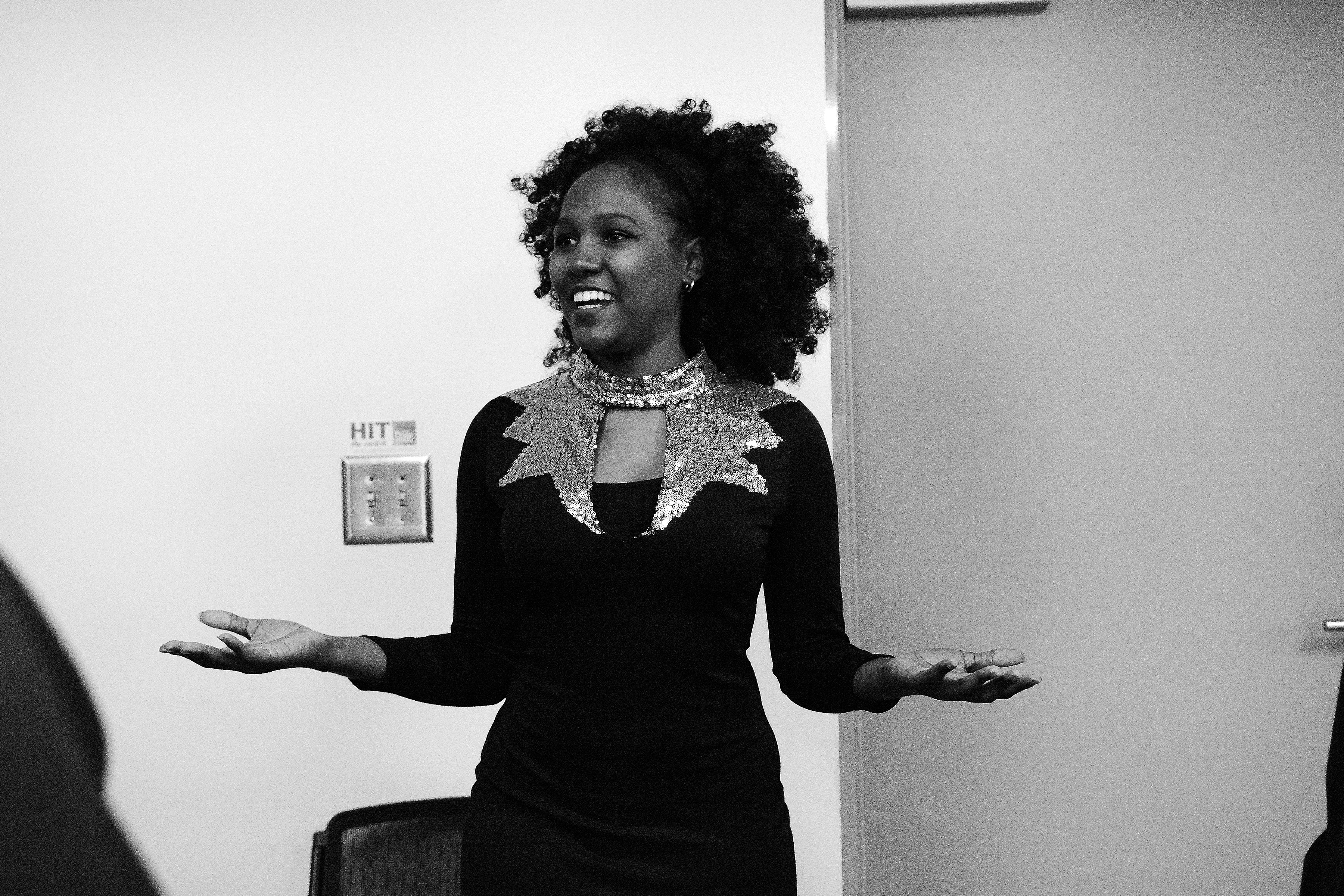Living history with Blacks in Wax

Anazsha Jones | Correspondent
“Ago!” Mamma Thorpe calls to the crowd.
This Swahili word is a call for attention, usually from an individual to a group. In the case of the African American Cultural Center, it has become a call from a group to the community and on Feb. 21, it took the form of Blacks in Wax.
Blacks in Wax is an annual event held in Witherspoon Student Center. It is designed as an interactive museum where students from NC State and members of the community dress up and act as characters in black history. It features a variety of figures from pop culture, like Chaka Khan and Diana Ross to politics, like Michelle Obama, but also hones in on lesser known individuals, such as Raleigh’s first African American mayor, Clarence Lightner.
Mama Thorpe describes the event as “a tribute to African American excellence in a way that honors our ancestors and celebrates our current accomplishments. The museum is an artistic, academic compilation of talent and hard work.”
Each character is chosen by the person playing them and they develop the script and information themselves, with guidance from the Blacks in Wax committee. Participants get a chance to play people who inspired them, and not just from a cultural standpoint.
Bethany Kendall, a junior studying history, has been a part of Blacks in Wax for the past three years portraying Billy Holiday, Eartha Kitt, and this year, Grace Jones, who was, among other things, a model, singer and actress. Jones is most known for the way she broke barriers in the fashion world with her dark skin and androgynous appearance. Bethany chose this character, she says, because Grace Jones taught her “You don’t have to fit into beauty norms to be beautiful. You don’t have to be weak and white to be pretty.”
“It’s important because they get to see themselves,” said Mama Thorpe. “You are not the stereotype. You have a rich culture that is rooted in academic success.”
The event also has a community focus, opening its doors to local schools, after school groups, community centers and the general populace. “We’re not great independently. We’re great based on what’s been poured into us, and that’s why we have a responsibility to give back,” Mamma Thorpe said.
Shay Branch, mother of two toddlers, brought her children along to the exhibit.
“I’m passionate about it [Black history], and whether they were listening or not, it would expose them at an early age to it,” Branch said.
At this event, exposure is the key. Many of the figures represented were unknown to most of the people who came through, and as each character ended their presentation with “Who am I?” People became painfully aware of the fact that they had no idea.
“It sparks conversations,” said Jordan Anderson, a junior studying environmental technology and management and AYA Ambassador for the AACC. “There’s a lot of forgotten names in African American history and so it revives those people so their legacies are still here no matter how long they’ve been gone.”
Blacks in Wax can be seen as both an opportunity and a responsibility to ourselves and those that came before us. It was a beautiful tribute to the lives lost, as well as a reminder that while we have come far as a people and a nation, we still have far to go.